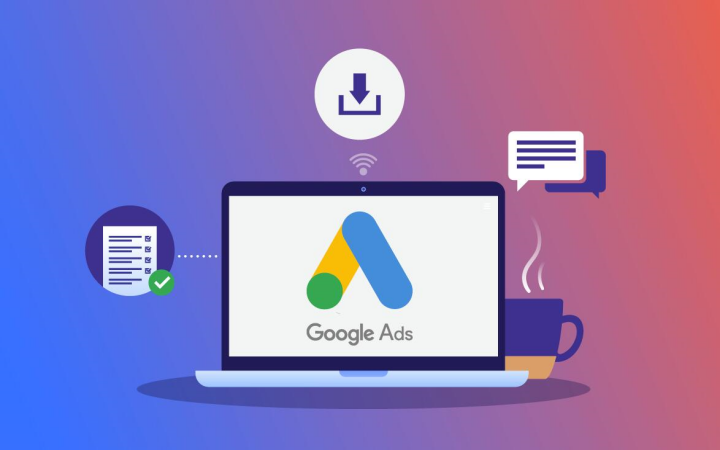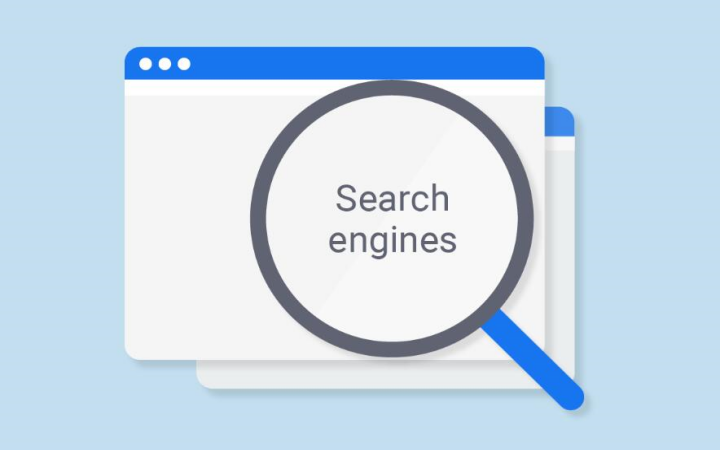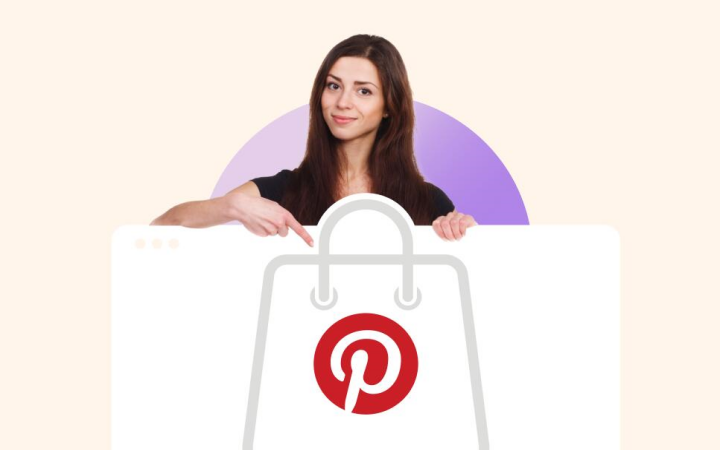Digital banners are the vibrant flags at the edge of the digital marketing landscape. With sizes that are as diverse as the terrain they cover, knowing the intricacies of banner sizes is crucial for any marketer wishing to sail across the sea of pixels.
In the world of digital banners aren’t just focused on grabbing attention. They’re about ensuring that they are long-satisfying for the viewer to be engaged. They’re the first impression and, as we’ve all heard that’s the most important thing.
In this thorough guide designed by aficionados of digital marketing, We’ll navigate the ocean of banner sizes, and explain the art of designing and displaying customizable banners online.

What Are Banner Ads?
Banner ads on websites show pictures and graphics. They display from agreements between websites and companies. Their purpose is to attract viewers to an advertiser’s website. For this, banners use eye-catching visuals and images. Banners come in various styles, all relying on visuals. This sets them apart from text-only ads, using only words.
How Do Banner Ads Work?
Banner ads function simply. When people browse websites, they encounter graphic banners. These often contain calls to action and links to the advertiser’s site. The links may be in the image or part of the HTML code making the ad space. Whenever someone clicks the banner, it counts as a ‘click-through’. They get redirected to the intended landing page.
Usually, banners lead to landing pages designed to further engage visitors. The aim is converting clicks into desired actions like purchases or form submissions.
The Most Common Banner Ad Sizes
When you’re creating your online advertising symphony it’s crucial to know the dimensions of instruments that you can use. These are the most popular sizes of banner ads:

Leaderboard (728×90)
The leaderboard is among the most popular sizes of banners on the internet. Most often, it is placed at the top of websites’ pages The horizontal banners provide plenty of space for visuals and text and are a perfect option for brand awareness campaigns.
Medium Rectangle (300×250)
This small square advertising unit is flexible and can be integrated into content in the sidebar, or listings. The rectangle-shaped medium is popular with users due to its ability to scale and integrate into websites without affecting the user experience.
Skyscraper (160×600)
The skyscraper, thanks to its slim and tall layout, gives advertisers vertical space to showcase their creativity and design. This format is particularly useful for bringing attention to users scrolling over material on the left side of a page.
Large Rectangle (336×280)
With less depth than the smaller rectangle, the larger rectangle offers more space, but without substantially expanding the area. It is a preferred choice for e-commerce and direct-response advertising.
Full Banner (468×60)
A little longer than a leaderboard, but with a toned-down height, the entire banner typically finds its place in the middle or at the top of the webpage. The compact design and ample size make it a perfect choice for different layouts on websites.
Half Page (300×600)
Another option for avid scrollers Half-pages are exactly what they sound like–a substantial part of the screen’s space that is impossible to overlook. It’s perfect for visually appealing images and dynamic material.
Top-Performing Banner Ads
When it comes to efficiency it is important to note that not all banner ad sizes are made in the same way. Certain sizes of banners have proven themselves to provide higher click-through rates (CTRs) as well as engagement. Let’s take a review of these banners that are the best performers:
Square (250×250)
Although they are small but are well-known for their high-engagement and adaptable deployment. They are easily integrated into areas with lots of text such as sidebars or material without causing any disturbance.
Large Skyscraper (300×600)
The addition of more space inside the skyscraper allows for more creativity in design. It’s an ideal option for ads that require air to breathe, allowing stunning images of high-quality and engaging material without being overly annoying.
Mobile Leaderboard (320×100)
This layout is perfect for mobile devices, making sure that your ads appear as appealing on phones as they would on larger screen sizes. Its wide width gives space for clear messaging as well as an encapsulated calling for action (CTA).
Billboard (970×250)
Billboard ads are the most prominent on the front of websites and impart a large space to display your message. While they aren’t as popular in size, their sheer magnitude makes them impossible to overlook and can be linked to more engagement and retention rates.
How to Determine the Right Banner Dimensions
Selecting the right size for your banner is more than simply choosing the appropriate size. It’s about understanding your goals for the campaign as well as the various options for placement as well as the impact you’re hoping for. This is how to choose the desirable option:
Campaign Objectives
Begin by defining what success means in your marketing campaign. Do you intend to improve brand recognition, drive visitors to your website, or drive direct sales? Your goals should align with the ad’s size communicate your message and connect with your audience in the appropriate setting.
Placement Options
Different sizes of ads work well in different digital settings. Think about where your ad is going to be displayed–whether in the middle of content in the sidebar or the top of the page–and select the size that perfectly fits this space without affecting your user’s experience.
Visual Message
What’s the material of your ad influences the size you select. The primarily text-based ads may benefit from a bigger canvas, whereas image-centric creatives are often able to work in smaller sizes. In addition, the level of level of detail in your layout should guide the size of your banner; larger ones can accommodate more complex designs.
Tips for Creating Effective Banner Ads
The art of creating a banner that doesn’t simply look nice but does the job well is an art and, like every art form, a few fundamental rules will warrant your banner’s message is a hit with viewers.
- Eye-catching visuals are essential: Utilize high-quality images as well as designs that are visually appealing and relevant to the context.
- Simple, concise text: Your message should be convincing and clear. With a limited amount of space, every word counts.
- A persuasive call to move: It should be clear as well as action-oriented and in line with your goal for the campaign.
- Consistency in messaging and branding: The banner should reflect the essence of your brand and your personality through consistency in the use of colors, logos, and messaging for your brand.
- Test and adjust: Always test and tweak. different variants of your banner to see which is the most effective and tweak upon your findings to improve performance.
What Does a Banner Ad Cost?
The price of a banner advert is subject to a wide range of variations, based on the advertising platform, the popularity of the website, and the general competitiveness of the marketplace. One method that is popular for charging banner advertisements is CPM which is cost per million (i.e. cost per 1,000 impressions). The typical CPM is between $2 and $10, though premium sites may charge more.
Be aware that the impact of banner advertisements should not be solely in terms of the cost associated with their location. It’s better to concentrate on the value they add to your marketing strategy, for example, the amount of conversions, or the quality of visitors they send to your website.
Tips for Optimizing Banner Ads
Use High-Quality Images and Graphics
Poorly designed or low-resolution graphics can make even the most thoughtfully designed banners appear dated and not trustworthy. Be sure that your images are of the highest quality and accurately reflect your brand.
Employ Clear and Concise Copy
The text you use should be clear and straight to the main point. The banner’s copy must grab the attention of viewers and convey the benefits of CTA.
Make It Interactive
If the platform can support it, interactive banners will be more attractive. This can include elements such as quizzes, videos, or hover-over effects that provide more details.
Optimize for Mobile
A majority of browsing happens now via mobile devices. Be sure that your banner is functionally and visually optimized for mobile devices.
Retargeting
You might want to consider together the retargeting method to display your banner to those who have already expressed interest in your product or services. This will greatly improve the effectiveness and relevancy of your advertisement.
FAQs
What are the Best Ways to Use Banner Ad Sizes?
Best practices include Keep file size small for quick loading. Use animations thoughtfully to get attention. Follow platform rules. Have the same message and design in different sizes to keep brand clear.
Where Do I Place Banner Ads for Maximum Impact?
Placement is key. For big impact, put banners where people will see them easily, but not too much. Good places: Above main site content. In content, like a recommendation. On popular sites with lots of viewers.
Universal Banner Ad Size Guidelines?
Industry-standard sizes exist for banners. But, different platforms might have specific requirements. Check their guidelines before creating banners to comply and maximize results.
How do I design a banner ad that captures attention?
Creating an ad people notice involves making it visually alluring. Utilize high-quality imagery. Keep text simple, yet clear. Focus on one key message. Integrate an obvious, enticing prompt urging user interaction.
Conclusion
Banner ads remain an effective tool for marketers. When you know the intricacies of the sizes of banner ads Digital marketers can adjust their ads to be in line with the expectations of their viewers as well as the digital platforms they utilize.
Make sure to remember that designing efficient banners isn’t a standard method. It’s a blend of innovative design, a strategic layout, and continual optimization.
In an age where attention is an in-demand commodity, your banner ad size could be the solution to unlocking a store of engagement with customers. Make sure you are playing the right cards and these digital banners crafted with care and precision will fly your company’s flag high in the online marketplace.
Posts that may interest you:


